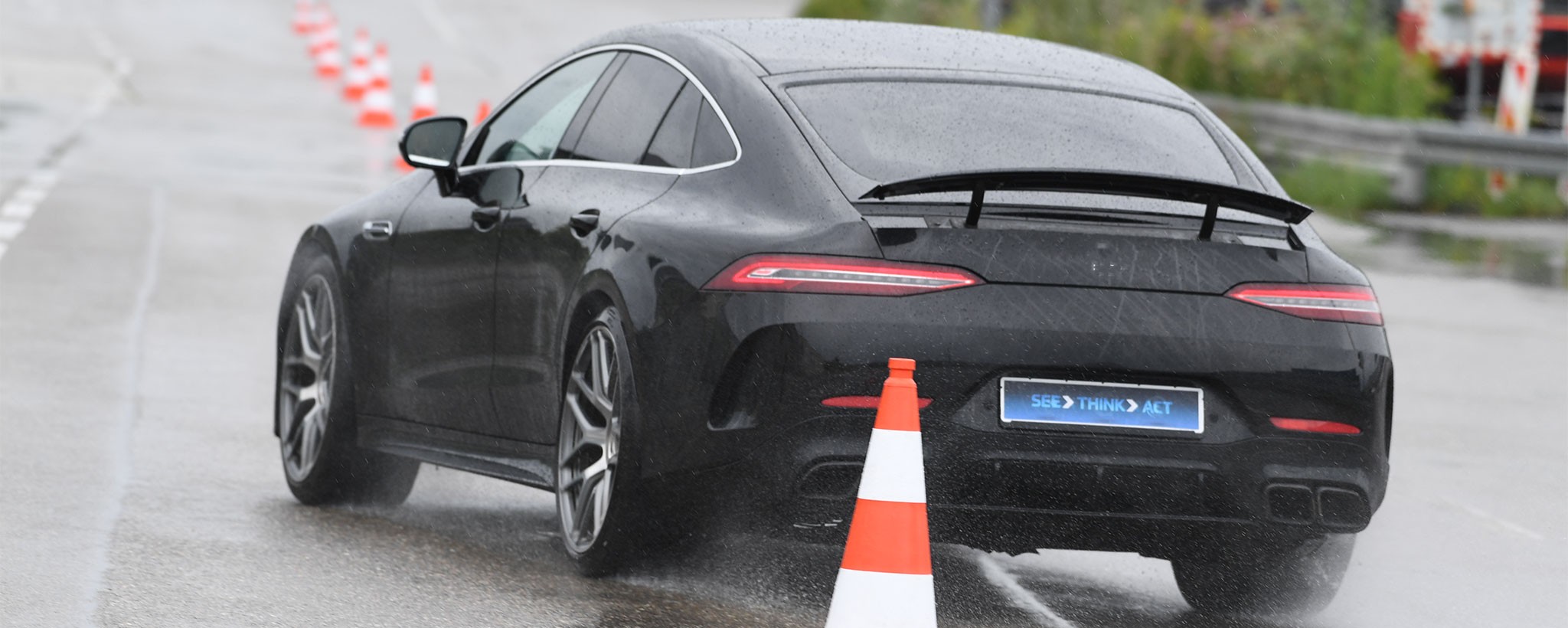Much has been written about the transformation of the automotive industry, with terms such as 'software-driven' and 'electric mobility' frequently used. One keyword rarely mentioned in this context though is the chassis. Yet the new drives and electronics architectures, the ever-better assistants and consistently higher level of automation will help shape the chassis for the next generation of vehicles. "Everything comes together in the chassis," says Christoph Elbers, Vice President Car Chassis Technology at ZF. "It's here, thanks to smart actuators such as brakes, steering or damping, that the vehicle's intelligence is put down onto the road. And an electric drive is much easier to network with the chassis than it was in the internal combustion engine days."


Chassis 2.0 - the Future of the Chassis
Min Reading Time
ZF combines its broad portfolio in chassis development: from smart actuators and software solutions to highly integrated mobile chassis.
The chassis of the future: Maximum variable
The chassis of the future: Maximum variable
The choice has repercussions for chassis development. On the one hand, if you can control how brakes, steering, shock absorbers and other similar components interact and regulate them using software, you can determine how a vehicle handles far better than with individual hardware components. Designers can take safety and driving dynamics to an entirely new level in this way. The same chassis will support sporty driving with direct feedback from the driver's steering input. With the autopilot on, occupants are isolated from road bumps and the sway of the vehicle's motion for a comfortable ride.
This type of driving comfort will even be the decisive factor for passengers to accept and appreciate highly and later fully automated driving. Above all, it is important to master the vertical dynamics. Thanks to various systems, ZF has an enormous range of actions here, depending on whether the semi-active damping CDC or the active sMotion is used, or whether there is also roll stabilization (ERC – electronic Roll Control) or air suspension on board.
Coordinated actuation of all systems is becoming vastly more important. "The Chassis of the Future is Code" was how ZF described this process a few years ago. ZF took this as the starting point for its cubiX chassis control algorithm, one of the first pure software products on the market today. There are also new electronics architectures that enable interaction with a software-driven architecture via host computers and functionally defined domain controllers. Service-oriented, cloud-based architectures that support updates of new advanced driver assistance systems through to automated driving functions underpin this development.
Opportunity for system-integration
Opportunity for system-integration
What does this mean for chassis mechanics? Control arms, dampers and suspension will still be key components, "Chassis 2.0" makes alternative chassis concepts possible. ZF, as system integrator, is advancing these concepts, combining all systems that make up a software-defined vehicle can be combined in a separate substructure, for example.
Various vehicle bodies can be bolted onto this "mobile chassis platform" consisting of high-performance controllers, Continuous Damping Control, braking systems, steering systems and an electric drive. This setup is known as the skateboard design. At first sight, it looks like a throwback to the body-on-frame architecture from automotive development in the past. In fact, it is the future. It offers a compelling solution for light commercial vehicles used as distribution vehicles in logistics or as small MPVs – autonomous vehicles in any event.
ZF is pursuing a further approach with a modular solution called mStars. The modular axle concept can form the hardware basis for the "Chassis 2.0" in passenger cars. mStars is suitable for all passenger car segments and drive types, and the AKC (Active Kinematics Control (AKC) rear-wheel steering system can also be integrated in a space-neutral manner. In this way, manufacturers can reduce the variety of structural variants and still offer a wide variety of driving functions thanks to networked software.
EasyTurn is suitable for passenger and transport vehicles that have to navigate through the cramped inner-city traffic with its small parking spaces, narrow streets, construction sites and loading zones. The ZF axle concept enables impact angles of up to 80 degrees on the front axle. Turning and parking maneuvers succeed almost playfully thanks to the extremely high wheel impact.
Chassis 2.0 meets all chassis trends
Chassis 2.0 meets all chassis trends
ZF brings together its response to these developments and requirements under the keyword "Chassis 2.0." ZF covers three potential fields of application for its customers: First, ZF meets more than virtually any other technology company the consistently high demand for smart chassis actuators to control longitudinal, transverse and vertical dynamics. "Vehicle Motion Control is one of our strategic action fields," says Elbers. The portfolio includes the latest-generation Continuous Damping Control, state-of-the-art brake and steering technologies as well as an integrated height sensor that can collect relevant mobility data while the vehicle is moving. Secondly, if you are looking to integrate chassis functions based on the modified E/E architecture of today's passenger car generations in a vehicle motion domain controller or even supplement these functions with software functions, ZF has the solution – particularly with its integrated cubiX chassis control unit. Thirdly, ZF offers groundbreaking chassis concept solutions for autonomous electric vehicles used flexibly for commercial applications. For example, people movers that double up as vans for transporting goods – as ZF demonstrated with the Rinspeed Snap concept a few years ago.
The chassis and its further development are decisive for the successful transformation of the automotive industry. ZF is also leading the field in this area.
"Vehicle Motion Control is one of our strategic action fields – which is why we can control the complete longitudinal, transverse and vertical dynamics of vehicles with our products."








